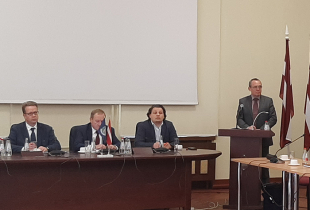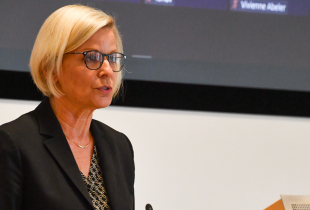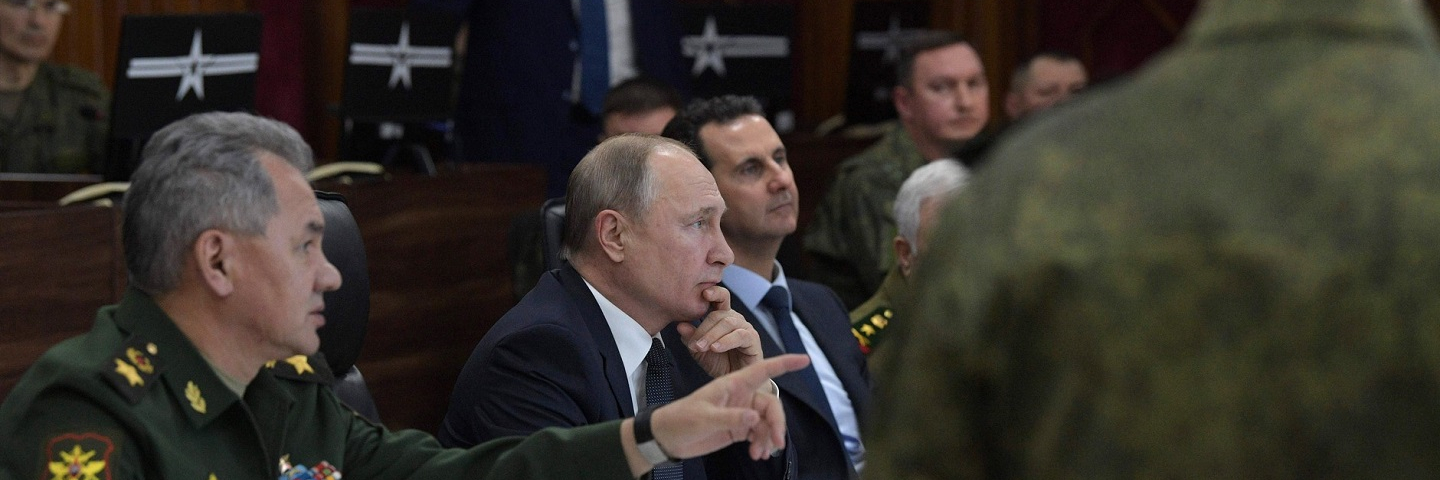
Discontinuity in Russian Strategic Culture? A Case Study of Mission Command Practice
Executive Summary
- Empirical evidence suggests that, parallel to the cultural continuity manifested in the main characteristics of Russian conduct in its operation in Syria, a departure from strategic tradition might have emerged on the tactical level: the emergence of a mission-command culture.
- If the symptoms are the harbinger of a cultural change, this would be a novelty and deviation from earlier Russian strategic tradition. The categorical answer to this question is beyond the scope of this piece, but we offer competing explanations for this conceivable eventuality.
- The literature on this subject differentiates between three different shifts in strategic culture: incremental and slow cultural transformation; rapid and fundamental change occurring during a short period of time; and a cultural change in which the overall strategic culture remains intact, but the strategic community deliberately and rapidly adopts new norms and practices. The characteristics of change shown in Russian conduct in the operation in Syria suggest that it is closer to the third, ideal type of shift.
Introduction
In this paper, we explore the extent to which certain aspects of Moscow’s military innovation following its campaign in Syria demonstrate discontinuity in Russian strategic culture. This question is of both theoretical and practical importance.
Scholars of international security studies have looked into the theoretical question of what preserves the cultural traits of a given strategic community. The consensus within the discipline is that strategic culture of a given actor, like any other culture, should manifest more continuity than change, and permanence over time regardless of the varying material circumstances. Scholars agree that changes in strategic culture, although rare and incremental, are possible, but they acknowledge that the theoretical knowledge about the essence of such shifts is limited relative to other aspects of the strategic culture theory in international relations (IR).1
This paper examines Russian strategic behavior in the Syrian campaign, and, specifically, which lessons related to command and control (C2) might have emerged. Refining conceptual knowledge about shifts in strategic culture also contributes to practitioners utilizing the analytical concept.
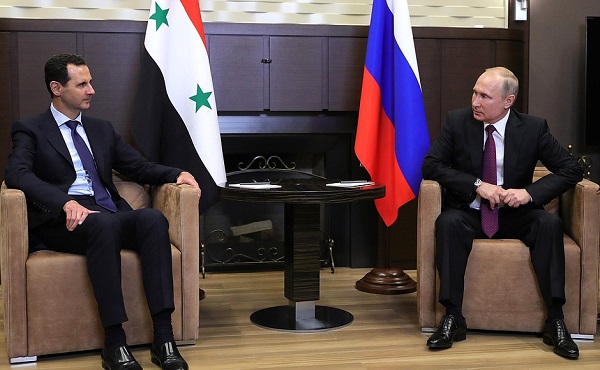
There are five main characteristics of Russian strategic-operational conduct in the campaign in Syria: (1) a holistic approach to strategy and operations; (2) recklessness and a disconnect between words and deeds; (3) a mix of messianic–pragmatic considerations; (4) an integral management style; and (5) operational creativeness. These characteristics demonstrate more continuity than change in the traditional Russian approach to military operations and strategy. However, empirical evidence also suggests that, at the same time, a departure from strategic tradition. Change might be evolving on the tactical-operational level, in the form of the emergence of a mission-command culture.
If the initial symptoms are the harbinger of a cultural change, this would be both a novelty and a deviation from the earlier Russian strategic tradition. This paper offers competing explanations for this conceivable eventuality. The categorical answer to this question is beyond the scope of this piece, which suffices with framing the question, offering initial food for thought, and outlining avenues for future research both on the question of the shift in Russian strategic culture and for the theoretical debate in IR about transformations in strategic culture and their drivers.
The paper proceeds in three parts. The first section defines mission command as a general practice in modern militaries and discusses possible indications of its emergence in Russia. The second section highlights generic theoretical explanations for the shifts in strategic cultures; the third section applies these explanations to the Russian case. The conclusion summarizes the findings and outlines the implications for strategic culture theory and for practitioners.
Mission Command and Russian Strategic Culture
If declarations of intent reflect anything, then we might be looking at the first signs of evolvement of a mission-command culture in the Russian military. Mission command is a decentralized tactical combat management style in which superior commanders share the overall intent of the mission with their subordinates and delegate to them freedom of action in choosing the optimal ways and means of executing it. Delegation of authority implies that subordinates take initiative and have dynamism, and that they understand the broader context of the combat mission they are executing. 2 The assumption that there is intent to adopt this decentralized culture—although the military brass has not mentioned it by name—has emerged from various statements made by Russian commanders within the broader learning process following the operation in Syria. When talking about the training of the new generation of young officers, the Chief of the General Staff, Valery Gerasimov, has underscored the cultivation of such qualities as an ability to rapidly assess the situation, make nonstandard decisions, employ military cunningness (voennaia khitrost’ i smekalka), and act unexpectedly. According to him, commanders should be creative, be willing to depart from the template, opt for calculated risk, and express reasonable initiative. These qualities, which imply significant autonomy and delegation of authority along the lines of the mission-command culture, would be a departure from the traditional Russian practice of centralized command at the tactical level.3
These virtues not only correspond with mission-command style, an asymmetrical approach, and operational creativity, but are also exactly the virtues needed to employ reconnaissance-strike complex (RSC): intelligence, command and control, and fire capabilities integrated into a joint system of systems. The “information technology revolution in military affairs” (IT-RMA) era—a euphemism for the current character of war, based on stand-off precision guided weapons and intelligence and command and control systems supporting them—demands that militaries adopt mission command. The complex, fragmented, fast-changing battlefield, “where combatants adapt constantly to exploit one-another’s weaknesses,” requires “devolving a high level of autonomy of decision-making to leaders on the ground.”4 However, ideational factors play a part in adoption of this practice. Indeed, cultural as well as technological issues were among the main reasons for the inability of the Soviet military to implement the IT-RMA visions of Marshall Ogarkov, the Soviet Chief of the GS who promoted this defense transformation since early 1980s. The concept of RSC, in which decentralized units that have their own independent means of collection and destruction are established, was at odds with the norms of the rigid Soviet military command culture and with the nature of the Soviet political system. The tactical creativity, flexibility, and capacity for independent action, so vital to employing IT-RMA-era weaponry and doctrines, were poorly developed in the Soviet military. Junior officers were educated “by the book,” adhering to the traditions of detailed tactical planning, centralization, and limited decision-making.5 Moreover, according to the Soviet military theory, wars were won at the operational level, not the tactical one. Consequently, authority was concentrated at the operational level, purposely limiting the freedom of tactical commanders. These commanders enjoyed a certain level of independence, but all the regulations that they had to abide by aimed to ensure that these commanders could not, on their own initiative, upset the plans and options of their superior officers.6 Although progress was made in improving the mental flexibility of junior commanders, initiative—on the tactical level—was a very difficult concept for the Soviet military to come to terms with.7 Since perestroika, Russian military theoreticians have criticized Soviet tactics for “conservatism, dogmatism, intellectual stagnation, the lack of junior officers’ creativity, and inability to improvise.”8 In light of this, if the Russian military does begin to adopt the mission-command culture, this will be a major departure from earlier tradition. To qualify as a discontinuity in the style of warfare, it should be a profound and long-lasting change in the military’s DNA, not programmatic announcements, not an episodic wartime adjustment, but a broad general transformation of the mindset and a shift in the organizational-cultural climate.
As of this writing, however, the significance of the change is unclear because the empirical evidence is mixed and insufficient to argue categorically about the emergence— or lack of—a mission-command culture in the Russian military. The annual strategic exercise Vostok 2018 and several other smaller-scale maneuvers since 2017 applied the lessons learned in Syria; in particular, the employment of RSCs on the tactical-operational level, which implied reliance on mission command.9 Some scholars debate this hypothesis because, according to them, such change runs against the very essence of Russian political-military culture. Despite appearances, the exercises demonstrated mission control rather than mission command.
An alternative view does not refute that possibility, conceding that there might have been a genuine intent to introduce mission command. According to this view, it was not practiced during Vostok 2018, however, to avoid possible accidents that could risk losing face with the Chinese, who also participated in the exercise. An additional view does identify a mission-command practice in the Russian military, but in conditions similar to those in a laboratory: short episodes confined to specific small units in selected military districts. This view shows that these exercises were exceptions to the rule; the exercises aim to test innovation and generate generic insights, but they do not indicate overall transformation in the command a culture.10
Shifts in Strategic Culture—Theoretical Explanations
If, however, such a shift is indeed emerging in Russian strategic culture, what accounts for it? Why has the Russian military been reorienting itself deliberately toward mission command, running against the traditional traits associated with the Russian culture of war? The importance of this question goes beyond the Russian case study and has wider theoretical implications. The query relates to one of the basic questions in strategic culture theory: What drives cultural modifications?
The theoretical literature differentiates between three types of shifts in strategic culture, which it sees as rare but possible. The first is incremental and slow cultural transformation that spans long periods of time; it could be decades or even centuries. The change is not brought about by a deliberate effort associated with a certain place, time, and group, but from the accumulation of numerous developments in the strategic environment over time that incrementally shape the norms and values of the given strategic community, forcing it to change. This change does not necessarily imply a total reinvention of the strategic culture; some earlier traits of behavior might adapt to the changing circumstances, in a process akin to the biological evolution of a species over successive generations.11
The second type of cultural transformation is an opposite process—rapid, fundamental, and broad change occurring over a short period of time. Usually, such change involves a deliberate decision by a given strategic community to disconnect from its previous culture, reinvent itself totally, adapt a new set of values and norms, and reform its professional behavior accordingly. The literature suggests that a strategic community or military organization initiates such total a cultural self-reform in response to a fundamental geopolitical shift. To illustrate this type of shift, scholars refer to the military organizations of Germany and Japan after World War II, and of the Warsaw Pact countries following the Soviet collapse, which deliberately parted ways with their earlier professional ethos and decided to fundamentally reinvent their styles of warfare, norms, values, and traditional professional military practices.12
The literature also designates a third type of cultural change, in which the overall strategic culture stays intact but the strategic community deliberately and rapidly adopts some new norms and practices. Scholars suggest that such a change follows a major strategic blunder and operational failure, when the institutions of the given strategic community, driven by their traditional cultural inclinations, cannot deliver the desired geopolitical outcome and demonstrate the bankruptcy of the mainstream professional approach. In such a situation, competing subcultures within the given strategic community—or within a new community of knowledge that has, until then, been marginalized by the dominant culture—begin to flourish. These subcultures offer alternative philosophies, values, and modus operandi that eventually become the mainstream, thus changing certain aspects of strategic style. This shift is similar to the second ideal type in that it is rapid, and to the first ideal type in that it has limited scope—it is not an all-encompassing change, but the modification of one particular practice within the broader framework that stays intact.13
The Sources of Cultural Change in Russia—Competing Hypotheses
Establishing where the Russian case stands in relation to this typology demands a separate in-depth study, which calls for collecting more empirical data about mission command, which is unavailable as of this writing. However, some initial thoughts are already conceivable. If the discussed change is indeed emerging, indications suggest that the Russian case is closer to the third ideal type: a strategic-operational blunder has sparked a crisis of knowledge, leading to a new paradigm that runs against the basic cultural instincts and strategic tradition, but satisfies the operational and geopolitical needs of the moment. Specifically, one could attribute the possible emergence of a mission-command culture in the Russian military to the following three interrelated developments.
The first is the shock of the Russian military leadership following the poor performance of the Russian military in the 2008 war with Georgia. This resulted in a crisis of knowledge and paradigmatic change, which in turn created an impetus for major reform of the conventional military. Although the lessons learned in Syria seem to be the main inspiration for the possible cultural change, the sources of a shift toward a mission-command culture emanate, in part, from the Minister of Defense Serdiukov reforms of the organizational structures (transformation from divisions to brigades); these reforms delegated more authority to the lower, operational-tactical levels of command.14 The deficiencies highlighted by the war and which the subsequent reforms tried to address—a deficit of standoff and precision weapons, insufficient C4ISR capabilities, and low proficiency of the Russian military to wage network-centric combined arms—are exactly the components of the RSC which Gerasimov and other military brass emphasize as the main lessons learned from Syria, and as the main qualities which they demand from the junior commanders to cultivate.15
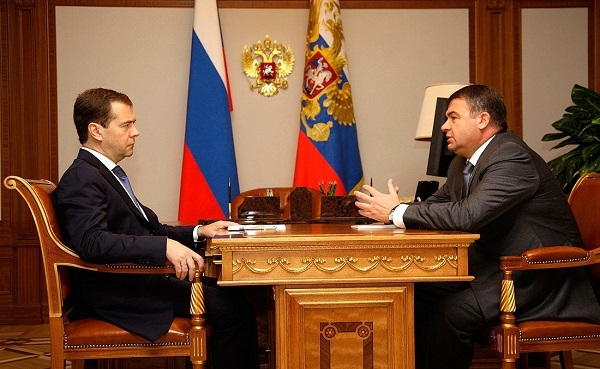
Second, the deliberate change seems to have emanated from a genuine understanding among the Russian military brass that the current character of war demands a military transformation of a certain type, even if it runs against the basic inclinations of the Russian style of war. Rather than the emergence of a subculture, as the theoretical literature would suggest, the Russian case seems to illustrate a top-down military innovation: The military theoreticians associated with the highest echelons of the military (mainly experts of the General Staff), following a systematic and critical exploration of the changing character of war, came to the conclusion that deployment of the IT-RMA-era-weapons demanded the adoption of a concept of operations based on mission command. This effort, in itself, is a worthy illustration of the Russian military tradition of diagnosing RMA—radical military innovations in which new organizational structures, together with novel concepts of operations, usually driven by new weaponry, change the conduct of warfare.16 Statements by Gerasimov and others in the military leadership, promoting professional virtues associated with a mission-command culture, build on the insight of the Russian military theoreticians.
Finally, the Russian case seems to correspond with what the literature defines as “institutional isomorphism”—the growing similarity of one organization to another as the result of imitation. The phenomenon relates to a situation where the military organization of a given country copies the professional practices of successful competitors even if its indigenous cultural heritage and/or material conditions hinder the successful adoption and employment of the emulated concept. When a quest for professional prestige drives emulation, it may result in suboptimal resource allocation and counterproductive operational behavior.17 In application to the Russian case, this would mean that the military brass looking at the Western IT-RMA method of war, the type of military organizations associated with it (i.e., RSCs) and the type of commanders operating them, sees a desired role model, the kind of armed forces it would like to have. Only then does it justify the desired innovation in the competitive terms of modern battlefield demands: if we don’t transform, this will reduce combat effectiveness, prevent us from using modern technologies, and allow us to be exploited by our enemies. Although both the “institutional” and the “competitive” isomorphism are genuine and merging here, still the main stimulus is a fascination with the role model of an ideal type professional military.18
Conclusion
Moscow’s modus operandi during the military campaign in Syria demonstrates steadiness in Russian strategic culture. This finding supports the basic theoretical proposition that the strategic behavior of a given actor is more likely to demonstrate continuity in the culture of war and military tradition, rather than a departure from earlier traits. However, the paper has also hypothesized that a possible novelty might be emerging on the tactical-operational level of the Russian conduct. Indications suggest that in contrast to the previous tradition of the centralized command, more planning, decision-making and execution authority might be delegated to the lower level of command – meaning that a mission command culture might be emerging in the Russian military. Critical examination of this possible novelty makes it possible to refine conceptual knowledge about shifts in strategic culture and inform both theory and practice of international security policy.
If the above hypothesis about the desire of the Russian military brass with regard to mission command proves correct, fostering such a climate demands approval from the political leadership. As of this writing, the military, the GS in particular, has unprecedentedly enhanced its position among other security and intelligence organs within the broader Russian strategic community. Such a distribution of power might be helpful in promoting this novelty. However, given the overall political culture and fundamental managerial tradition, the regime might be concerned about cultivating such an independent modus operandi among the entire generation of lower-level military commanders. It is reasonable that the senior leadership realizes that in order to survive and win modern wars, it should delegate more authority to the tactical levels. Something similar happened during the GPW, when Stalin delegated authority to his marshals at the most daunting moments of war. However, he reclaimed it as soon as the situation stabilized. If the regime is indeed learning and evolving, less concerned about commanders of this kind, and approves the cultivation of a totally new organizational-cultural climate, this would mean a major departure from the tradition. However, it is equally possible that if the regime feels threatened by this innovation it might disapprove it and downgrade the accumulating power of the innovating military. Such an eventuality would be a clear continuity in the strategic tradition. Stalin smashed Marshall Tukhachevsky in the 1930s and Khrushchev smashed Marshall Zhukov in the 1950s when the military innovations, which they led, although effective in purely military terms, endangered the political leadership.
If mission command practice and culture indeed materialize in Russian military, as part of the lessons learned process, it will be a major departure from the Russian military tradition. As of this writing, the expert community has competing views on such an eventuality. More time and additional data are needed to test this hypothesis. One thing is already clear: the issue is becoming a critical question for the Russian military, as there is no known way for modern militaries, thus far, of employing RSC effectively without adopting mission command on the operational-tactical level.
For Academic Citation
Dmitry (Dima) Adamsky, “Discontinuity in Russian Strategic Culture? A Case Study of Mission Command Practice,” Marshall Center Security Insight, no. 49 (Febuary 2020): https://www.marshallcenter.org/en/publications/security-insights/discontinuity-russian-strategic-culture-case-study-mission-command-practice-0.
Notes
1 For discussions on strategic culture, see Colin Gray, “Strategic Culture as Context: The First Generation of Theory Strikes Back,” Review of International Studies, Vol. 25, No. 1, January 1999; Colin S. Gray, Out of the Wilderness: Prime Time for Strategic Culture (Fort Belvoir.: Defense Threat Reduction Agency, 2006); Jeffrey Lantis and Darryl Howlett, “Strategic Culture,” in John Baylis, James Wirtz, and Colin Gray, eds., Strategy in the Contemporary World (Oxford: Oxford University Press, 2016); Jeffrey S. Lantis and Andrew A. Charlton, “Continuity of Change? Strategic Culture of Australia,” Comparative Strategy, Vol. 30, No. 4, 2011; Tomas Karasek, “Tracking Shifts in Strategic Culture,” Obrana A Stratgie, Vol. 1, 2016; Alan Bloomfield, “Time to Move On: Re-Conceptualizing the Strategic Culture Debate,” Comparative Security Policy, Vol. 33, No. 3, 2012; Tamir Libel, “Explaining the Security Paradigm Shift: Strategic Culture, Epistemic Communities, and Israel’s Changing National Security Policy,” Defense Studies, Vol. 16, No. 2, 2016; David G. Haglund, “What Can Strategic Culture Contribute to Our Understanding of Security Policies in the Asia-Pacific Region?” Contemporary Security Policy, Vol. 35, No. 2, 2014.
2 Eitan Shamir, Transforming Command: The Pursuit of Mission Command in the U.S., British and Israeli Armies (Stanford: Stanford University Press, 2011).
3 Editorial, “General Gerasimov: Siriiskij opyt—bestsennaia shkola dlia rossiiskikh voisk,” Polit Rossiia, February 5, 2017; “V Voennoi akademii GSh VS RF proshlo ocherednoe zaniatie kursa ‘Armiia I Obshchestvo’” Ministerstvo Oboroni Rossiiskoi Federatsii (MO RF), February 3, 2017; “Vystuplenie nachal’nika GS VS RF na zasedanii Kolegii Minoborony,” MO RF, November 7, 2017; L. Khairemdinov, “Siriiskij opyt kak osnova,” Krasnaia Zvezda (KZ), July 18, 2017.
4 Eitan Shamir, Transforming Command: The Pursuit of Mission Command in the U.S., British and Israeli Armies (Stanford: Stanford University Press, 2011).
5 John Erickson, Soviet Ground Forces: An Operational Assessment (Boulder: Westview Press, 1986).
6 Michael Eisenstadt and Kenneth Pollack, “Armies of Snow and Armies of Sand: the Impact of Soviet Military Doctrine on Arab Militaries,” in Emily Goldman and Leslie Eliason, Diffusion of Military Technology and Ideas (Stanford: Stanford University Press), 2003, pp. 69–70.
7 Christopher Donnelly, “The Soviet Operational Maneuver Group: The New Challenge for NATO,” International Defense Review, Vol. 15, No. 9, 1982.
8 I. N.Vorob’ev, “Pochemu taktika okazalas’ v z astoe,” VM, No. 1, 1989; I. N.Vorob’ev, “O tvorchestve i novatarstve v taktike,” VM, No. 3, 1988; I. N.Vorob’ev, “Takticheskaia oborona,” VM, No. 1, 1989; A. M. Adgamov, “Protiv shablona i konservatizma v taktike i tak- ticheskoi podgotovke,” VM, No. 10, 1988; A. P. Kurkov, “O svobode tvorchestva i nauchnom potenciale professorsko-prepodavatelskogo sostava akademii,” VM, No. 11, 1986; A. F. Shramchenko, “Vyrabotka tvorcheskogo myshleniia u slushatelei v khode operativno-takticheskoi podgotovki,” VM, No. 3, 1990. The Soviet military profession never considered tactics to be prestigious and noble and never emphasized them relative to other levels of war. In contrast with the 1930s, theoretical writings on tactics were absent from the military literature following the Great Patriotic War; see V. Triandafilov, Kharakter operatccii sovremennykh armii, (Moscow: Gosvoenizdat, 1936); A. Reznichenko, Taktika (Moscow: Voenizdat, 1987); Dmitry (Dima) Adamsky, The Culture of Military Innovation (Stanford: Stanford University Press, 2010).
9 Michael Kofman, “Assessing Vostok-2018,” Russian Military Analysis Blog, September 28, 2018. For the smaller exercises, see Iurii Belousov, “Gotovy k buduschim uchebnym srazheniiam,” KZ, May 30, 2018; “Na Tsentralnom-Aziatskom strategicheskom napravlenii,” KZ, December 19, 2018; A. Khokhlov, “V voiska vnedriaetsia pobednyi Siriiskii opyt,” Vecherniaia Moskva, December 13, 2017; A. Bondarenko, “Pod pritselom—dzhihad mobile,” KZ, July 9, 2017.
10 Vladimir Milenski, “Vostok 2018 and the Fear of Free Play in Russian Military Thinking,” Defense and Security Analysis, January 22, 2019; Mathieu Boulegue, “Did the Russian GS Experiment with Free Play During Vostok 2018?” Defense and Security Analysis, January 17, 2019; Daivis Petratitis, “Russian Mission Command in Vostok Strategic Exercise,” Defense and Security Analysis, January 22, 2019; Jyri Raitasalo, “Lessons from Vostok-2018: Free Play Maneuvers are Overrated and Mission Command Needs to Be Bounded,” Defense and Security Analysis, January 22, 2019; Michael Clemmesen, “On the Role of Free Play in Army Exercises and the Russians,” Defense and Security Analysis, January 22, 2019.
11 For example, see: Gray, 1999; and Gray, 2006; Karasek, 2016; Alan Bloomfield, “Time to Move On: Re-conceptualizing the Strategic Culture Debate,” Comparative Security Policy 33/3 (2012), 437-461; Anja Dalgaard-Nielsen, “The Test of Strategic Culture: Germany, Pacifism and Preemptive Strikes,” Security Dialogue, Vol. 36, No. 3, 2005; Heiko Biehl, Bastian Giegerich, and Alexandra Jonas, Strategic Cultures in Europe (Berlin: Springer, 2013); Tamir Libel, “Explaining the Security Paradigm Shift: Strategic Culture, Epistemic Communities, and Israel’s Changing National Security Policy,” Defense Studies 16/ 2 (2016), 137–156.; Tamir Libel, European Military Culture and Security Governance: Soldiers, Scholars and National Defence Universities (London: Routledge, 2016).
12 Ibid.
13 See, for example: Gray, 1999; Gray, 2006; Karasek, 2016; Libel, 2016; Libel, 2018; Bloomfield.
14 Golts, 2019; Galeotti, 2017; Renz, 2018.
15 Dmitry (Dima) Adamsky, Moscow’s Syrian Campaign (Paris: IFRI, 2018).
16 N. Ogarkov, Vsegda v gotovnosti k zashchite otechestva (Moscow: Voennoe Izdatel’stvo, 1982); N. Ogarkov, Istoriia uchit bditel’nosti (Moscow: Voenizdat, 1985); N. Ogarkov, “Prognozirovanie” and “predvidinie,” in Voennyi Entsiklopedicheskii Slovar’ (Moscow: Voenizdat, 1983); I. Shavrov and M. Galkin, Metodologiia voenno-nauchnogo poznaniia (Moscow: Voenizdat, 1977); F. Gaivoronovskii and M. Galkin, Kultura voennogo myshlenia (Moscow: Voenizdat, 1991); V. Konoplev, Nauchnoe predvidenie v voennom dele (Moscow: Voenizdat, 1974); S. Krupnov, Dialektika i voennaia nauka (Moscow: Voenizdat, 1963); I. Grudinin, Dialektika i sovremennoe voennoe delo (Moscow: Voenizdat, 1971).
17 For example, see Emily Goldman, “The Spread of Western Military Models to Ottoman Turkey and Meiji Japan” and Theo Farell, “World Culture and the Irish Army” in Theo Farrell and Terry Terriff, eds., The Sources of Military Change (London: Lynne Rienner, 2002); Emily Goldman and Leslie Eliason, The Diffusion of Military Technology and Ideas (Stanford: Stanford University Press, 2003).
18 Farell, 2002, p. 85.
About the Author
Dmitry (Dima) Adamsky is Professor at the School of Government, Diplomacy and Strategy at the IDC Herzliya University, Israel. His research interests include international security cultural approaches to international relations; and American, Russian, and Israeli national security policy. He has published on these topics in Foreign Affairs, Security Studies, Journal of Strategic Studies, Problems of Post-Communism, Intelligence and National Security, Studies in Conflict and Terrorism, and Cold War History. He is the author of Operation Kavkaz (2006), The Culture of Military Innovation (Stanford University Press, 2010), and, with Kjell Inge Bjerga, Contemporary Military Innovation (Routledge, 2013). This paper is based upon his latest book, Russian Nuclear Orthodoxy (Stanford University Press, 2019), which is about religion, politics, and strategy in Russia.
Russia Strategic Initiative (RSI)
This program of research, led by the GCMC and funded by RSI (U.S. Department of Defense effort to enhance understanding of the Russian way of war in order to inform strategy and planning), employs in-depth case studies to better understand Russian strategic behavior in order to mitigate miscalculation in relations.
The Marshall Center Security Insights
The George C. Marshall European Center for Security Studies in Garmisch-Partenkirchen, Germany, a German-American partnership, is committed to creating and enhancing worldwide networks to address global and regional security challenges. The Marshall Center offers fifteen resident programs designed to promote peaceful, whole of government approaches to address today’s most pressing security challenges. Since its creation in 1992, the Marshall Center’s alumni network has grown to include over 13,985 professionals from 157 countries. More information on the Marshall Center can be found online at www.marshallcenter.org.
The articles in the Security Insights series reflect the views of the authors and are not necessarily the official policy of the United States, Germany, or any other governments.
